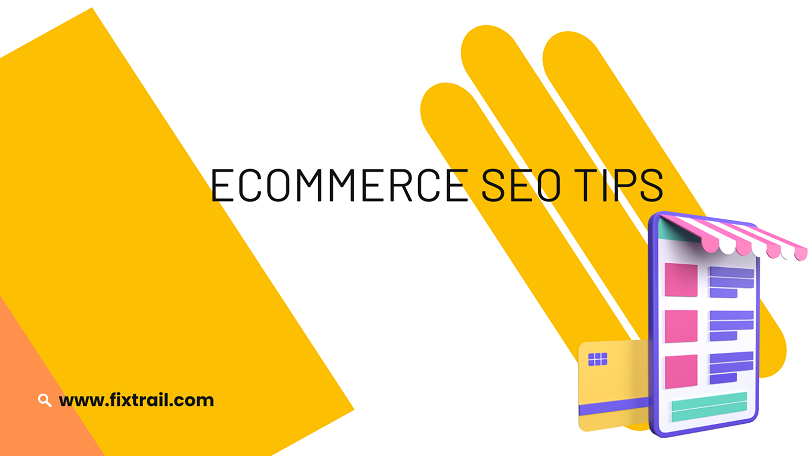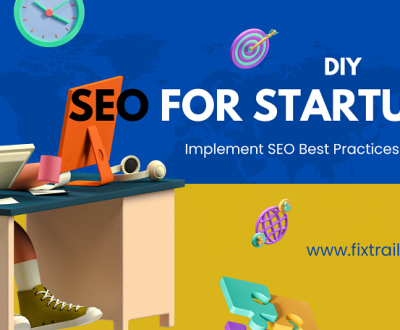
With over $5.8 trillion in online sales last year alone, ecommerce continues to grab a bigger piece of the retail pie. As an ecommerce business, your online visibility is essential for reaching and converting potential customers.
That’s where SEO comes. Search engine optimization can help drive customers to your virtual storefront just by optimizing your content for the search terms and topics people care about. The right SEO can get your products ranking higher in organic search and bring in way more relevant traffic.
In this article, I’ll share crucial ecommerce SEO tips to boost your rankings and revenue.
What is Ecommerce SEO?
Ecommerce SEO refers to optimizing an online retail website to improve rankings and visibility in search engines’ organic results. The goal is to increase traffic and conversions by helping searchers find and buy your products.
With ecommerce SEO best practices, you can capture more organic traffic that converts into sales. It provides a significant competitive advantage over retailers who don’t focus on search visibility.
Keyword Research for Ecommerce SEO
Thorough keyword research lays the foundation of any effective ecommerce SEO strategy. Here are some tips for discovering the right keywords to target:
- Start by identifying broad, high-traffic terms related to your products using Google Keyword Planner and autocomplete.
- Use long-tail variations like “most comfortable folding camping chair” or “stylish coffee tables for small spaces” to tap into specific buyer needs.
- Analyze which keywords currently drive traffic to competitor sites using tools like SEMrush to find opportunities.
- Study your own site analytics to uncover terms visitors search for to land on your site.
- Speak with customers and analyze reviews to understand the natural language used around your products.
Regularly update keyword lists to match seasonality and new product offerings. Track search volume, competitiveness, and optimization opportunities.
With comprehensive keyword research, you can discover untapped terms that will connect your ecommerce site with motivated searchers.
Optimize Product Pages for Maximum Visibility
Product pages are shoppers’ destination for assessing and purchasing your items. Use these best practices to optimize them for higher rankings and conversions:
- Include the target keyword in the H1 heading and title tag – e.g. “Biodegradable Yoga Mat”
- In the meta description, use a compelling slogan or key product benefit focused on the searcher’s need – “Our lightweight yoga mats provide extra cushioning for sensitive joints.”
- In the body content, leverage the primary keyword in the first 100 words. Also use related long-tail keywords like “pvc-free yoga mat”.
- Add alt text with keyword-focused descriptions for all product images to improve indexing.
- Include structured data like product schema, reviews, breadcrumbs to enable rich results in the SERPs.
- Craft unique page titles and descriptions for each product. Avoid duplicating the same content across multiple pages.
- Ensure technical elements like URL structure, page speed, mobile optimization are implemented.
- Place calls-to-action above the fold to get users clicking. Test different button locations, sizes, colors, and text.
Monitor product ranking positions and organic CTRs. Iterate based on this data to continuously improve.
With comprehensive on-page SEO and conversion optimization, you can outrank competitors to capture more of the buying market for your products.
Improve Site Navigation and Internal Linking
An intuitive, seamless site navigation ensures customers can easily find and purchase your products.
- Structure categories and filters to align with different stages of the buyer journey. Include comprehensive facets like price range, brands, product attributes, ratings, etc.
- Optimize category names and descriptions for keywords buyers use when searching. For example, use “dresses for women” instead of just “dresses.”
- Implement breadcrumbs across the site so users can trace their path back and feel oriented. Include keywords in the anchor text.
- Use descriptive internal link text like “minimalist hiking boots” instead of generic terms like “click here” or “page.”
- Point category and product page links to relevant landing pages to facilitate discovery. For instance, link the brand name in product descriptions to the brand’s dedicated page.
- Ensure calls-to-action like Add to Cart buttons are visible above the fold and on product pages.
- Create links between related products to encourage further browsing and purchasing.
Optimizing site navigation involves understanding both user behavior through analytics and the keywords that searchers use to find products they want to purchase online. This enables a site architecture that facilitates on-site conversions.
Speed Up Your Ecommerce Site
Site speed is critical for ecommerce sales. According to Google, 53% of mobile site visitors will leave a page that takes over 3 seconds to load.
Implement the following optimizations to accelerate your site speed:
- Enable compression of resources like images, CSS, and JS files to reduce file sizes. Gzip or Brotli compression can reduce page weight by 70%.
- Optimize images by cropping, resizing, and compressing to lower KB size. Also use responsive images and new formats like WebP.
- Defer non-critical third-party JavaScript to prevent render blocking. Leverage async and defer attributes.
- Minify HTML, CSS, and JavaScript code by removing unnecessary characters to shrink file sizes.
- Implement browser caching of static assets so files are not re-downloaded with each page request.
- Use a content delivery network (CDN) like Cloudflare to distribute resources and cache pages closer to visitors.
- Upgrade to more performant web hosting for faster server response times.
Regularly test site speed using PageSpeed Insights and WebPageTest to catch any slowdowns. Target a load time under 2 seconds on mobile and under 3 on desktop.
For large ecommerce sites, scaling dynamic content delivery is crucial. A hybrid or serverless architecture and database caching can maintain speed during traffic spikes.
With a fast, lag-free experience, customers are more likely to browse products and complete purchases rather than abandon your site.
Building Authority and Trust
Gaining authority and trust signals will increase click-through rate from organic listings. Here are some effective tactics:
- Build quality backlinks through guest posts on industry blogs, interviews on relevant podcasts, and resource page lists in your niche.
- Publish in-depth, extensively researched guides like “How to Choose the Best Hiking Backpacks” to establish expertise.
- Develop relationships with influencers to get product recommendations, reviews, and mentions.
- Encourage user-generated content like customer reviews, ratings, Q&A, and photos to provide social proof from real users.
- Ensure positive brand mentions on third-party review sites like Trustpilot. Respond appropriately to any negative feedback.
- Build diverse, natural linking from directories like Capterra and industry sites. Avoid low-quality links.
- Achieve certifications or awards related to quality, ethics or sustainability to showcase trustworthiness.
- Get involved in local community events and partnerships relevant to your customers.
With a mix of reputation-building online signals and community engagement, you can position your ecommerce brand as the most authoritative and trusted for your products. Monitor competitors’ efforts and keep expanding your authority.
Track Keyword Rankings and Optimize Accordingly
Consistently tracking keyword rankings is crucial for optimizing an ecommerce site. Here are some tips:
- Use rank tracking software like SEMrush, Ahrefs or Moz to see where you currently rank for target keywords versus competitors.
- Segment keyword rankings by priority, search volume, and difficulty to focus optimization efforts.
- Analyze ranking pages to identify opportunities – consider adding keywords to titles, content, schema markup.
- For top money terms not ranking on page 1, review the page strength and assess gaps. Does the content satisfy searcher intent?
- For new product launches, track ranking progress for critical product name and description keywords.
- Monitor which landing pages are ranking for which terms to inform information architecture.
- Study competitors ranking above you – what are they doing right? How can you create better content?
- Keep an eye on local pack rankings for location-based sales opportunities.
Updating keyword targeting based on this data and iteratively optimizing ensures maximum visibility for your most valuable ecommerce keywords over time. Analyze what pages rank for which keywords then optimize accordingly. For instance, if your hiking socks page isn’t ranking for “warm winter hiking socks”, look for opportunities to incorporate that term on the page organically.
Ecommerce SEO success requires technical expertise and constantly staying on top of evolving algorithms. While doing it yourself is possible, many retailers find great value in partnering with an experienced ecommerce SEO agency. The right SEO professionals have the skills to audit your site, identify optimization opportunities, execute proven tactics, and deliver results. With the proper strategy and expertise, ecommerce sites can continually improve organic visibility and sales through search.
About us and this blog
We are a digital marketing company in Nepal with a focus on helping our customers achieve great results across several key areas.
Request a free quote
We provide professional SEO, Social Media Marketing, and Paid Search Advertising services.
More from our blog
See all postsRecent Posts
- Essential Ecommerce SEO Tips to Boost Your Online Sales September 2, 2023
- DIY SEO for Startups: Implement SEO Best Practices Yourself August 30, 2023
- SEO vs PPC: Which Is Right for Your Business? August 30, 2023






